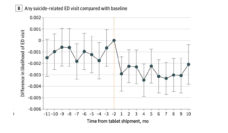In the last decade, 136 rural hospitals have closed in the United States. Multiple factors, including low patient volumes, financial instability, and physician and nurse shortages, have contributed to this trend. The COVID-19 pandemic further stressed rural hospitals and emergency departments, which were not prepared for the spike in patients with severe respiratory illnesses. Minority communities were some of the hardest hit by the pandemic and hospital closures. Preserving care in these areas can support essential emergency and inpatient hospital services for the 60 million residents of rural America.
Rural communities have high mortality rates for time-sensitive conditions, such as a stroke, myocardial infarction, or severe infections and limited access to emergency care services. This is just one result of widespread hospital closures in rural areas. Following closure, the surrounding communities also experience higher unemployment rates and lower numbers of local physicians compared to communities with a hospital.
Communities where hospitals have closed are heavily concentrated in Southern and Midwestern states that have not expanded Medicaid. Without expanding Medicaid, states limit providers from receiving much-needed financial support from the federal government. In addition, recent closures have occurred in communities with lower average incomes and with a higher percentage of Black and Hispanic residents compared to closures three decades ago.
In some instances, closures reflect shifting demand as technological advances allow complicated procedures and treatments to occur in outpatient settings. However, the current rate of rural hospital closures re-enforces rural-urban disparities in health outcomes, including preventable mortality from cancer and cardiovascular disease.
Through a health systems approach, we can take action to prevent closures from restricting much-needed access to care for rural communities.
Based on our research, we propose several key policy changes at the local and federal level to transition from the traditional focus on inpatient hospitals to rural health ecosystems that adapt to community needs. Supporting the health care workforce, boosting rural hospital revenue, and rethinking traditional rural “hospitals” are three critical components to comprehensively address the needs of rural communities.
Closures can have significant impacts on the number of physicians practicing in rural communities–including an 8.2% annual reduction in the number of primary care physicians. Supporting the provider workforce includes ensuring rural physicians remain in communities even after a closure by building networks of outpatient rural primary care and specialty care. We can support these local physicians by investing in primary and specialty care practices. We should also further research the effects of procedural specialty shortages, such as obstetricians/gynecologists and general surgeons—an understudied driver of preventable mortality in rural areas.
We can also use federal reimbursement policies to better support rural hospitals. Global budgets provide predictable revenue to hospitals rather than traditional fee-for-service payment systems which may change revenue year after year. This would free up providers to offer services that are best suited for local communities rather than having programs change based on available funding. For example, in rural counties dependent on migrant agricultural workers, a hospital can invest in mobile clinics for preventive health efforts, likely diagnosing disease earlier and saving costs incurred by a late diagnosis.
Rural communities can also embrace telemedicine advances, rural emergency hospitals, and ambulatory surgical centers to form a decentralized rural health care infrastructure that can respond to community needs. These stand-alone facilities would not offer traditional inpatient services but rather focus on patient stabilization prior to transport and elective procedures. Through a health systems approach, we can take action to prevent closures from restricting much-needed access to care for rural communities.
Photo via Getty Images















